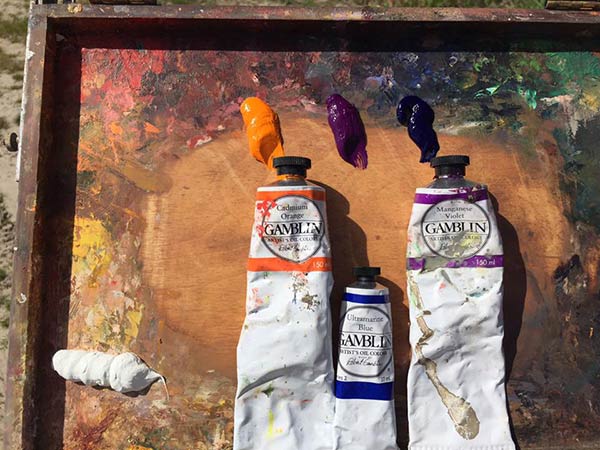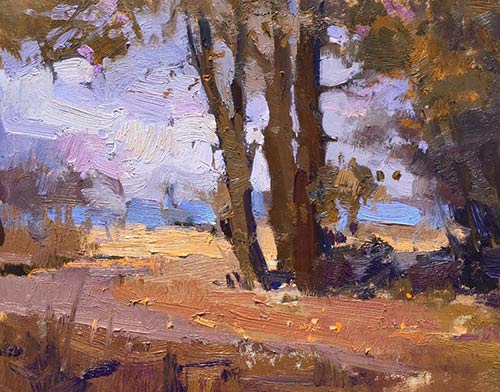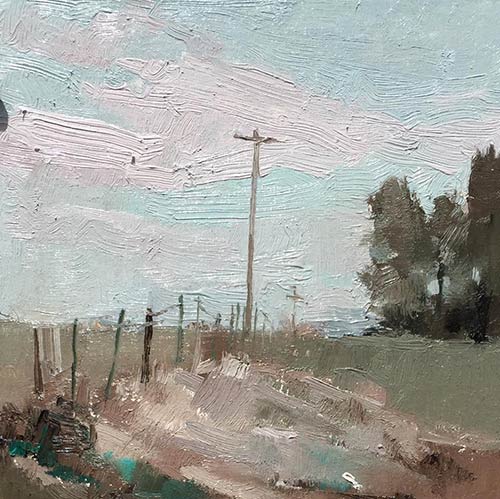
Part painter’s survival test, part “Chopped”-style challenge with mystery pigments, Eric Jacobsen’s Random Tube Challenge had social media buzzing.
Here’s how it works: Grab three tubes of paint from your working palette — without looking — and add white, if desired. Paint.
Jacobsen enlisted Aimee Erickson as a fellow adventurer in the challenge. Doing this with a friend helps, as the other person can arrange tubes in a color wheel so your blind choices can at least be somewhat away from each other on the spectrum.

Erickson points out that although they dubbed it a challenge, it’s actually quite liberating. “The invitation is not the challenge,” she says. “The challenge is inherent in solving a picture with three random colors. Eric had mentioned it a couple of times, and then last week we were out on Sauvie Island, throwing rocks and not thinking about painting, when we remembered it. In painting you always have to interpret reality and let go of something. This makes it easier, because you obviously can’t nail the colors you see with these three random colors. I like to be thinking about solving a picture for value and color relationships anyway. I had been thinking about improvisation — which Denyse Schmidt defines as ‘responding in the moment to the materials at hand.’ (I just took a terrific improv quilting workshop from her.) That and resourcefulness, which I define as making something with what I have, are both at play here in the Random Tube Challenge. There’s also an element of letting go, and that is all good!”
Erickson’s palette turned out to be cadmium orange, ultramarine blue, manganese violet, and white. Jacobsen’s palette was phthalo green, asphaltum, Portland warm gray, and white. The resulting paintings from the duo’s experiment are very pleasing. The color harmonies are what one would expect — or hope for — from a limited palette. That’s part of the idea, according to Jacobsen.

“Periodically throughout the year I use a simple palette of ultramarine blue, cadmium red, cadmium yellow, and white,” he says. “It forces me to keep things simple and work on values since I don’t have any favorite go-to colors on my palette. Then at one point I started doing funky limited palettes — ones which I would choose deliberately — and I liked the challenges … and sometimes I even liked the results. Then I thought, wouldn’t it be fun to do a random choosing of three colors plus white and try to make a painting with them? I had talked with Ken Roth about doing the Random Tube Challenge at some point … also mentioned it to Laurel Buchanan but never put it into practice until Aimee and I had the courage and opportunity to try it.”
Have you ever done a “random tube challenge?” Tell us about it in the comments below!
> Click here to subscribe to the free newsletter, Plein Air Today




I think this is wonderful idea.
Great results by two of my fav painters! I love the freedom of a limited palette!
My teacher used to make us do this about 15 years ago.